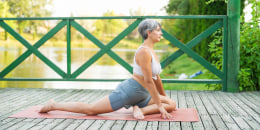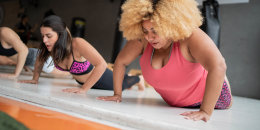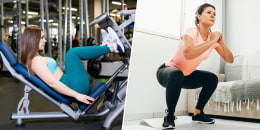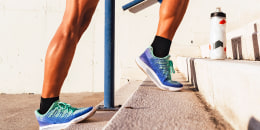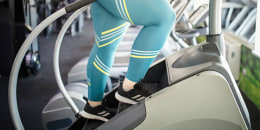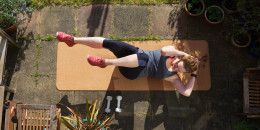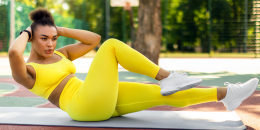For core workouts from Stephanie Mansour — plus fitness challenges, walking podcasts, meal plans and inspiration — download the Start TODAY app!
When it comes to toning the abdominals, many of my clients specifically want to target the lower abs. Commonly referred to as the "lower-belly pooch," it's an area that women specifically struggle with.
Unfortunately, endless crunches aren't going to tighten and tone the area. In addition to healthy diet changes and cardio exercise to burn calories and reduce body fat overall, I recommend adding reverse crunches to your core workout instead.
Learn more about the benefits of reverse crunches, including why they are one of my go-to moves for targeting the lower abs. Plus, how to perform them correctly and other exercises that will build the core strength necessary to master the movement.
Reverse crunches benefits
Reverse crunches are a great way to target the lower belly and strengthen the entire core. Considered the opposite of the standard crunch, they require you to engage the deep abdominal muscles to lift the hips and legs off the floor. This really helps to strengthen the core and create muscle tone.
Beyond the aesthetic benefit, reverse crunches help build a stronger and more balanced core, which is essential for overall stability and posture. The move can also improve low-back strength and flexibility, contributing to better spinal health and reducing the risk of back injury and pain.
An added bonus: Reverse crunches reduce the likelihood of performing core exercises incorrectly and putting undue stress on the neck. Neck pain is a common complaint when people do abdominal crunches and although crunches seem like an easy move, research suggests that they can increase the risk of low-back pain when they’re not performed correctly. Reverse crunches reduce the risk of neck and back strain, since you’re lifting the lower body toward the chest, versus lifting the upper body off the ground like in regular crunches and situps. This movement allows you to keep the neck and upper back in a neutral position while engaging the core muscles, minimizing the risk of neck and back strain.
Reverse crunches muscles worked
Reverse crunches engage the obliques and the rectus abdominis, the pair of muscles that run vertically down the torso and are responsible for giving your core that “six-pack” look. They also work the transverse abdominis, a deep core muscle that is essential for core strength and stability. A strong core is essential for maintaining good posture and balance and moving efficiently during both exercise and normal daily movement.
Reverse crunches form mistakes
When performing reverse crunches, there are some common mistakes that can make the exercise less effective. The most common mistake I see is swinging the legs, which uses momentum to raise the hips, instead of engaging the core muscles. People also often bring their hips and legs too high off the ground.
Here are my best tips for mastering the reverse crunch:
- Don’t swing your legs. Move slowly and intentionally to get the most out of the reverse crunch. Instead of relying on momentum to raise your hips, focus on squeezing the abs during the upward movement. To really engage the core, imagine your belly button moving toward your spine.
- Don’t lift your hips too high. If your back loses contact with the mat, you’ve lifted up your hips too far. Tilt your pelvis forward and crunch just far enough to have your tailbone lift off the ground.
- Don’t let your knees move past your hips too quickly. Control the movement of your lower body and move purposefully to engage your core more effectively.
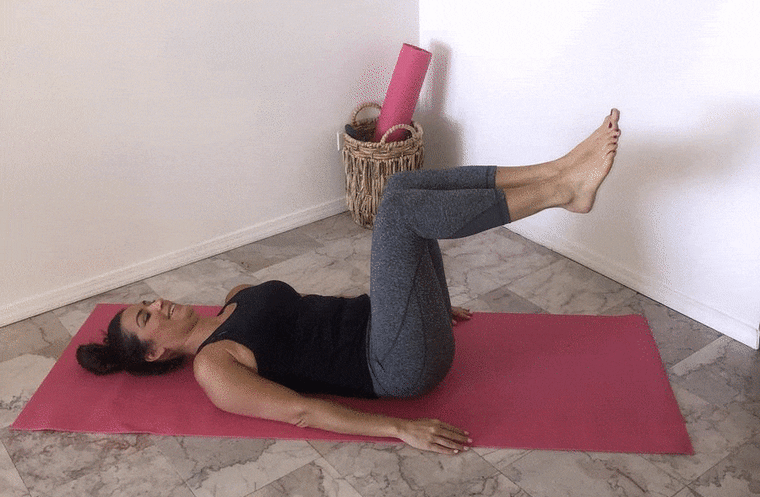
How to do modified reverse crunches
If you are a beginner just starting to work on developing core strength, reverse crunches can be difficult. The good news is the exercise is very easy to modify. Simply decrease the range of motion by moving your hips and legs only halfway or even a quarter of the way of the full movement. As you build strength, you can increase the range of motion over time and work up to the full move.

How to do reverse crunches
Follow the steps below to perform the reverse crunch. Remember to take it slow and control your momentum.
- Lie on your back with your arms at your sides.
- With your knees bent, squeeze your abs and raise your legs so that your knees are hovering over your hips at a 90-degree angle. Keep your calves parallel to the mat so that your legs are in a tabletop position.
- Engage your core as you lift your hips and knees toward your chest. Think of tilting your pelvis forward. Keep your entire upper body on the ground. Make sure that only the lowest part of your back comes off the ground; nothing higher.
- Keep the legs at a 90-degree angle throughout the entire movement as you come back down, through tabletop, and tap the feet on the ground.
- Repeat the steps, remembering to breathe slowly while squeezing your abdominals.
5 reverse crunch exercises
There are plenty of exercises that are similar to the reverse crunch. When working on core strength, I recommend performing these four moves until you feel confident enough to perform the reverse crunch without any modifications.
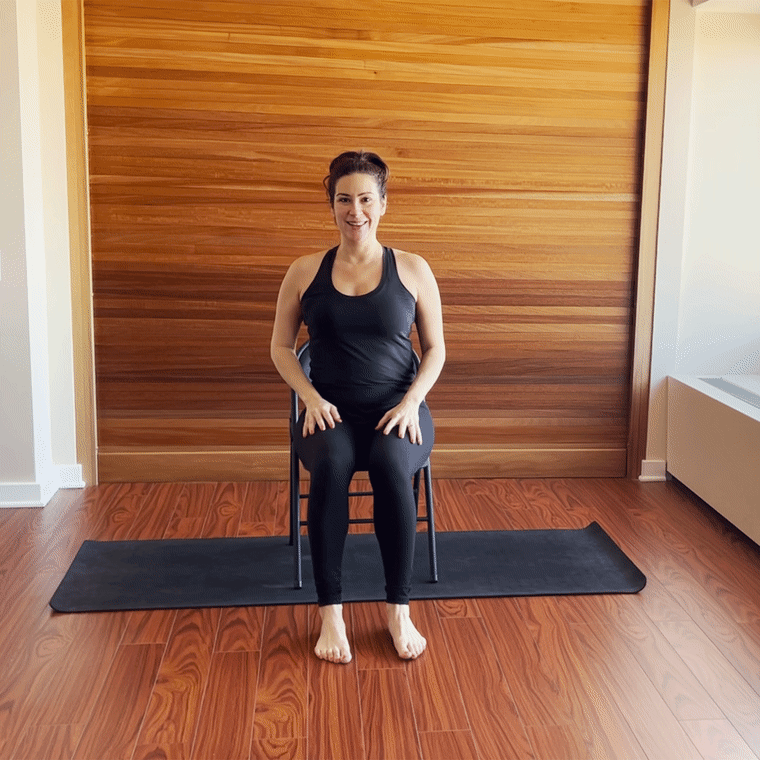
Seated leg lift
Start sitting on a chair with both knees bent. Keeping one foot on the ground, straighten the other leg out in front of you, squeezing the quad and flexing the foot. Then slowly raise the leg until it is parallel to the floor. Pause, then slowly return the leg to the starting position. Repeat 10 times and then switch legs.
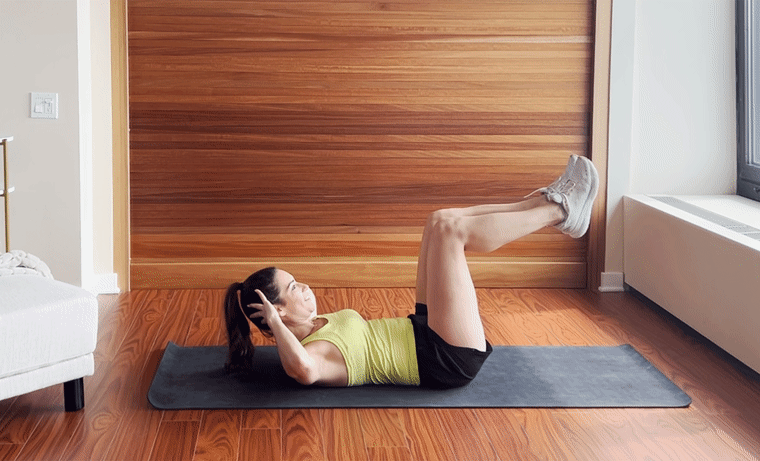
Bicycle crunch
Start by lying flat on your back with your legs in tabletop position and your hands behind your head. Bend the left knee and straighten the right leg at a 45-degree angle, while also crunching your right elbow toward your left knee. Return to start, then bend the right knee in toward your chest while straightening the left leg at a 45-degree angle, crunching the left elbow to meet the right knee. Alternate legs as you continue your bicycle motion ten times on each side. Make sure to go slow, squeezing your core with every movement.
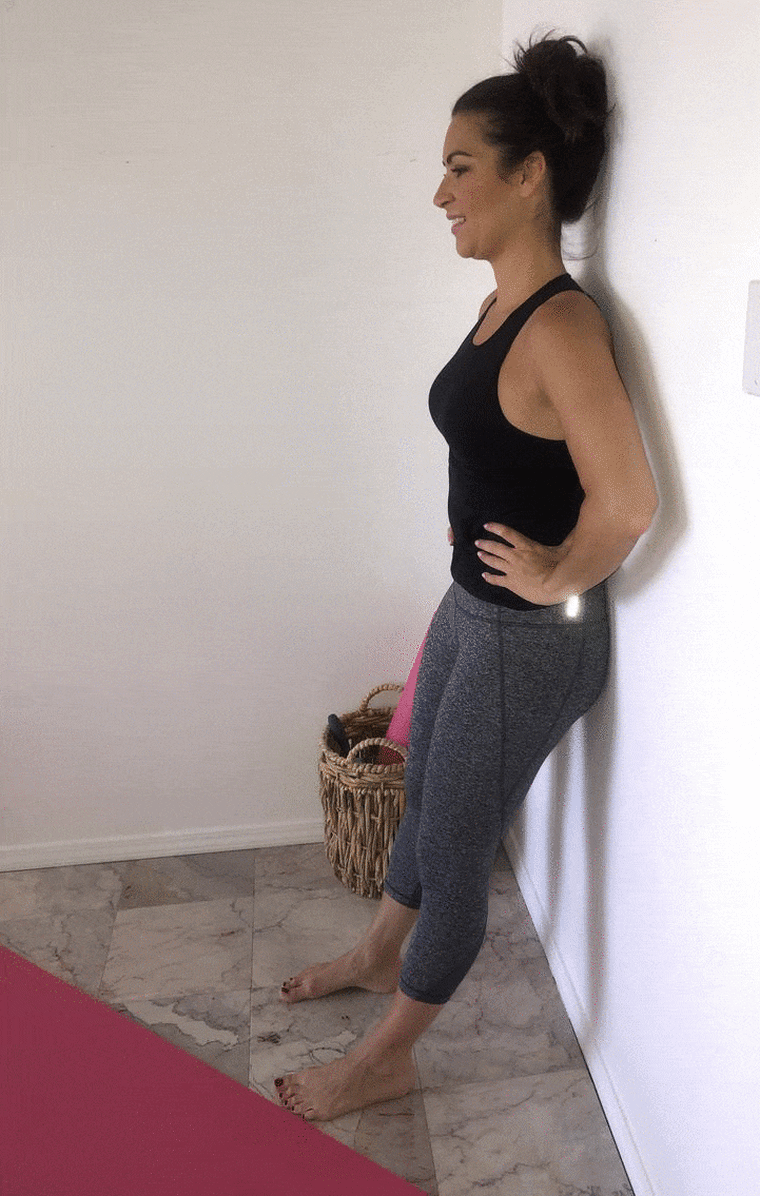
Wall sit
The wall sit is helpful to build balance and strength in the low back and core, while also training you to engage the deep abdominals. Lean your back against a wall and sit down into a squat position as if sitting into a chair. Keep your low back pressed into the wall and your knees bent (somewhere between a 45- and 90-degree angle). Squeeze your core. Hold for 30 seconds, or as long as you can.
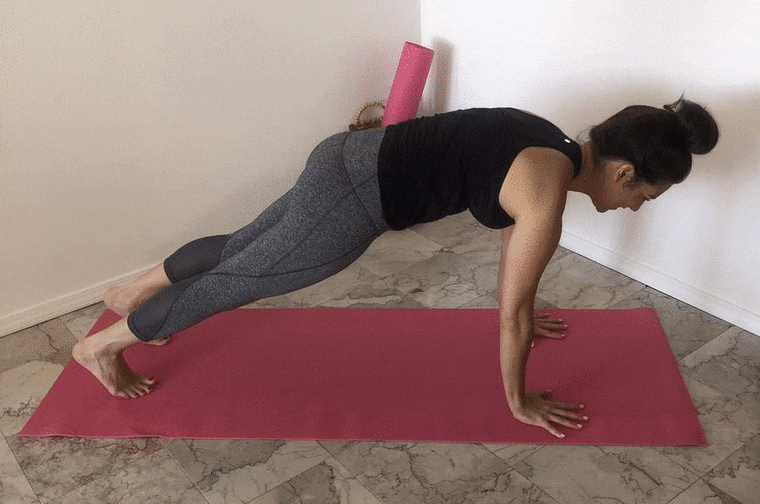
Mountain climbers
Mountain climbers involve the same type of lower-body motion as the reverse crunch. Begin in plank position. Bend one knee, bringing it toward your chest. Return to a plank position, then bring the alternate knee to your chest. Alternate legs, squeezing your core, performing 20 climbers total.
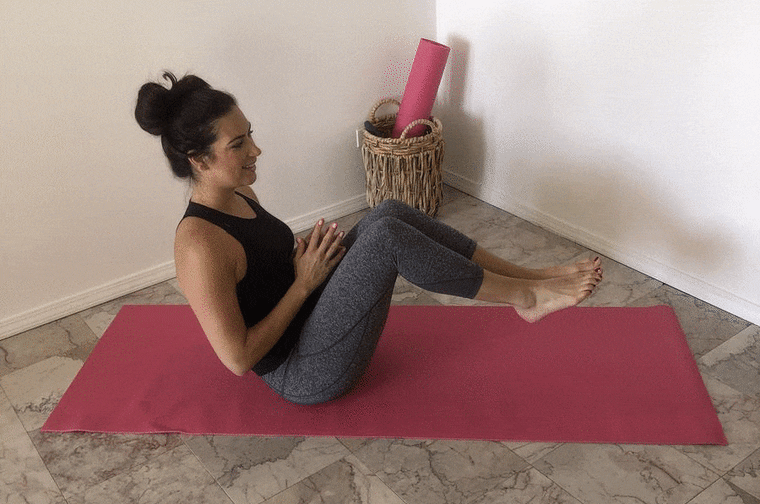
Oblique twists
Sit on the mat with your knees bent and your feet raised off the floor. Pull your abs in and lift your shins to a 45-degree angle. Squeeze your abs, and twist your torso to the right, tapping the floor with your hands. Then twist your torso to the left, tapping the floor with your hands. Continue this motion from side to side, making sure to keep your head, arms and core aligned the entire time. To make this move more challenging, hold a weight in front of your chest as you move from side to side.

